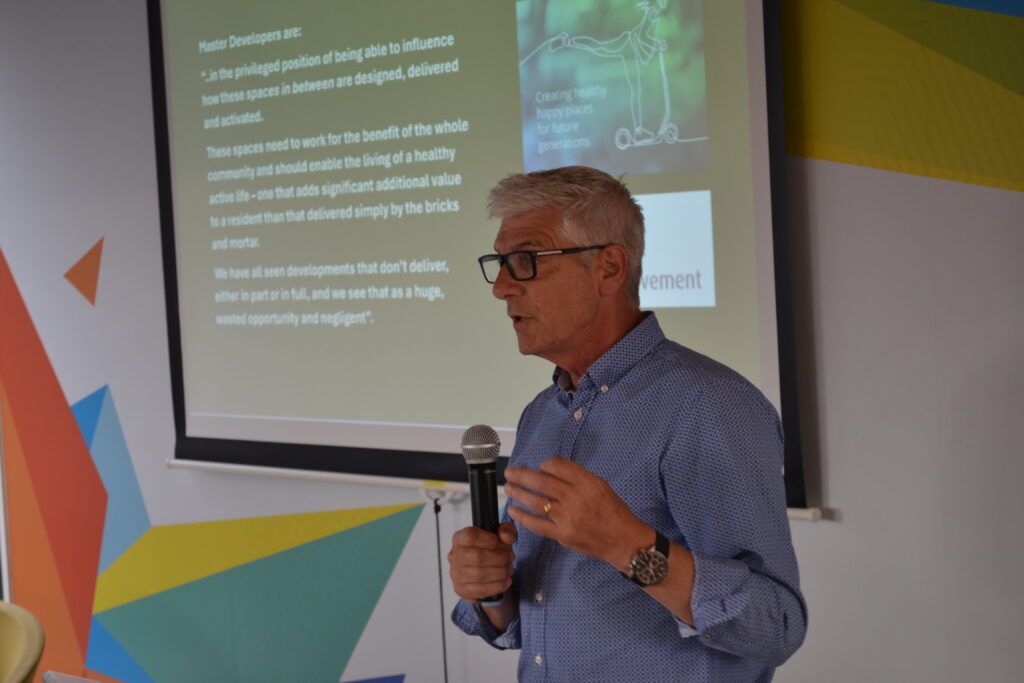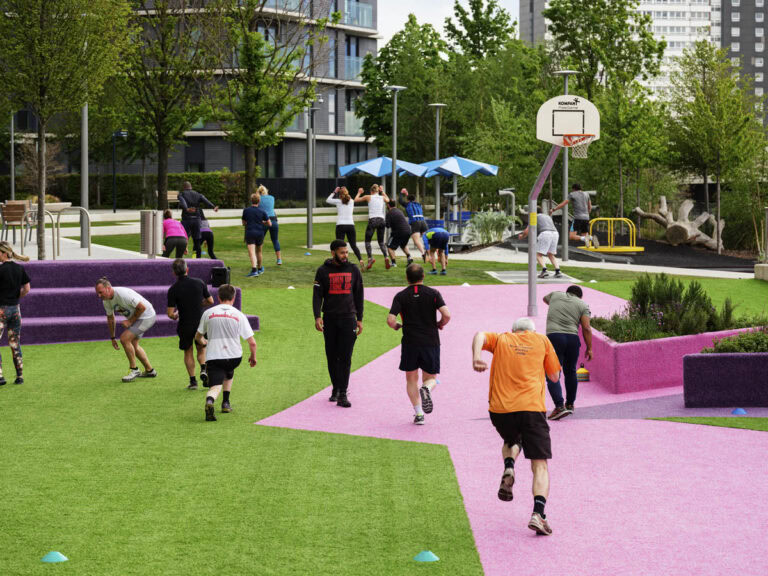12 July 2024, London – Earlier this summer, London Sport hosted its first policy event following the 2024 London Mayoral election, to discuss policy solutions that the Mayor of London – as well as any future Government – should prioritise for healthier and more active cities.
The event largely focused on the themes raised in our London Sport manifesto – from discussion on how planning and development processes can be reformed to better cater for physical activity, enabling spaces and places for children to play and move more, as well as creating welcoming environments for women and girls to be active.


To kickstart the discussion on active design, we welcomed Trevor Smith (Sportsmith Ltd) as our Firestarter presentation, who discussed the work he has done with Andy Mytom (David Morley Architects) to highlight the challenges and opportunities that exist around active design – so this blog sets out what they believe are the key issues to be addressed for effective policy in this space.
Context
In 2021, Sport England launched its 10-year strategy: ‘Uniting The Movement’, which includes 5 core pillars of activity – including a very welcome focus on the creation of ACTIVE ENVIRONMENTS and Active Design 3 followed shortly afterwards.
When Sport England articulated its refreshed vision for active environments, it identified what it called an “Implementation Gap.”
Where it acknowledged that the knowledge, skill, expertise (and resource) existed to create better, more active public spaces, but it was unclear who should be leading that and “doing the doing.”
At the time, developers were perceived as being one of the most prominent villains. However, it has become increasingly clear that a significant part of the problem is the planning system, which is too rigid, too safe, too parochial, too precedent-focused, too risk-averse, and too criteria-driven.
Our challenge is that what we see is that planning authority regulations and criteria – (different across different authorities), are restricting developers’ motivation to innovate, so they simply revert to providing what they are told to provide – the path of least resistance. So, we end up with more of what we have always had.
What is being done?
Last year, we joined developers, architects, landscape designers, national organisations and lobby groups and local authority representatives in discussion to unlock the conundrum of “who’s job is it to lead the change we want to see?.”
We heard from Sport England, Homes England, a local authority, an Active Partnership, and a self-professed active urbanist, and discussed what needed to happen from a planners’ perspective, a designer’s perspective, a local authority perspective, to make change happen.
Outputs were distilled to a few themes which included.
– Challenge the norm: Set to one-side play policies restricted by maintenance concerns and pitch numbers driven by formulas that only focus on a limited selection of sports. Instead, developers and planners should collaborate and agree the vision for a development where everyone in a community can be active in their environment for life using the knowledge, skills and resources we have available.
– Be bold: for developers to positively challenge planning criteria and processes where they felt they could achieve better outcomes for people by doing things differently.
– Build trust: Above all, we agreed we should work together to help planning officers to be more comfortable saying “yes” to new ideas.
Our Aim
To expand the success of an active environments case study where residents said living there, ‘hit their subconscious to be more active, they don’t know why but they like it!.’
What next?
We propose a cross-sector approach to work with Government (nationally and locally) to challenge our planning system to be brave and bold and help us deliver environments which engender positive relationships with movement and physical activity – perhaps something for a new Government to convene and drive?
Case studies
Case studies (such as Loughborough University’s Active Campus) show that innovation is possible. We can have environments that “look after the people,” but we need to allow:
– Flexible planning requirements for open space – not the same as a typical housing developments; and
– Trust in developers – collaborating constructively with local authority planners to bring out the best environments possible.
We can also take ideas from examples that have been effective internationally:
- In Sweden, in Canada, in Australia, municipalities are actively consulting, collaborating and innovating on new developments and on transforming public spaces – with a vision to create spaces and places which fit the demands of today’s and tomorrow’s population – where traditional public spaces are slowly being transformed to give people permission to play, or interact in their own way.
- In many countries, particularly the Middle East at present, new communities are being designed and built around a foundation aspiration for an active community. Street plans encourage active travel, there are communal open spaces co-located with sports areas and picnic spaces all within eyesight of each other. Even in some established cities, like Doha (Qatar) the urban environment is being retrofitted with pocket parks, dedicated cycle routes, physical activity opportunities and more friendly, walkable streets.
To find out and read more on Trevor and Andy’s work on Active Environments, read more here:
https://www.sportsthinktank.com/live-manifesto.html
You can also contact them by email here to discuss these issues further:
- Trevor Smith: [email protected]
- Andy Mytom: [email protected]
Background:
Andy Mytom, from David Morley Architects, and Trevor Smith, Managing Director of SPORTSMITH, both share a mission to enhance lives through thoughtful design. Andy aims to invite and enable people to be active, understanding the diverse needs individuals have at different life stages. Similarly, Trevor, with his extensive background in public sector leisure services, sports development, physical education, and culture and heritage, advocates for physical activity and literacy. Together, Andy and Trevor collaborate with planners, designers, and developers to champion the creation of more active public spaces, fostering environments that promote health and well-being for all.
About London Sport
London Sport is a charity that exists to help ensure more Londoners live happier, healthier lives through access to sport and physical activity.
Supported by Sport England and the Mayor of London, London Sport collaborates with those that share our vision, running and supporting projects that help children, young people, and the least active adults to embed sport and physical activity into their lives.
For more information on London Sport, visit www.londonsport.org
For further comment or interview opportunities, please contact: [email protected]

